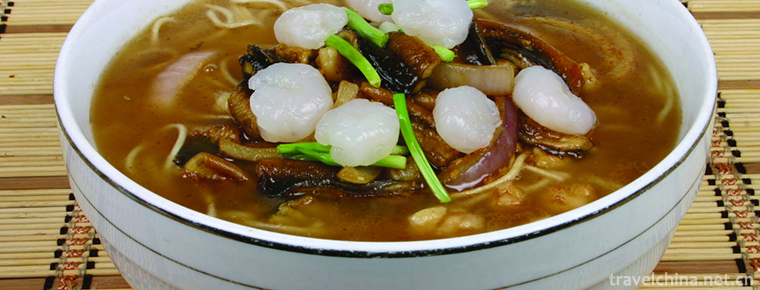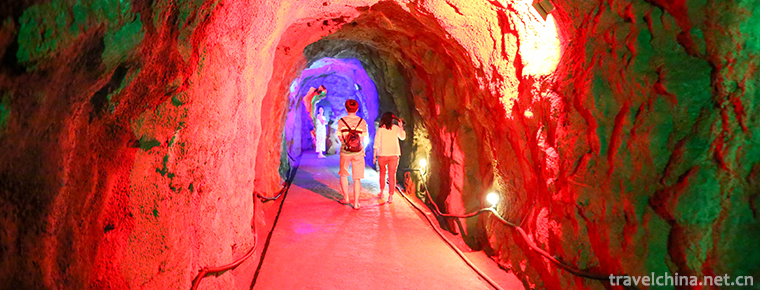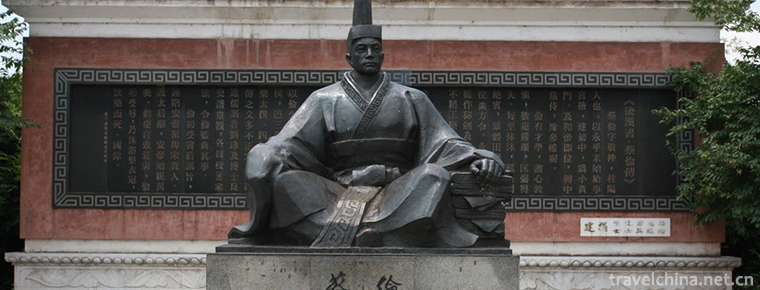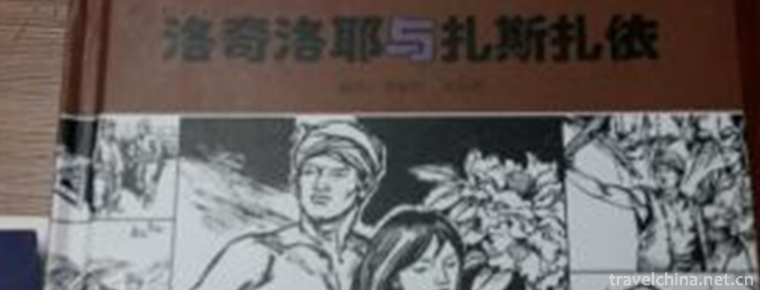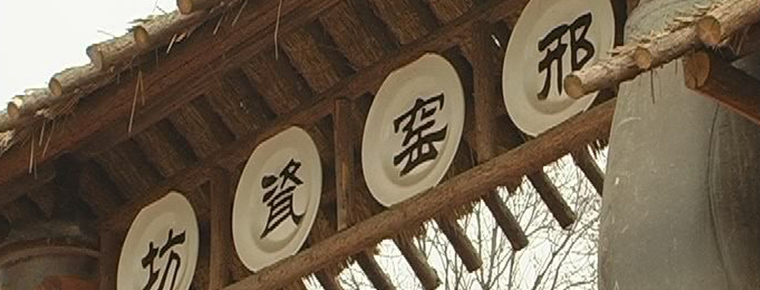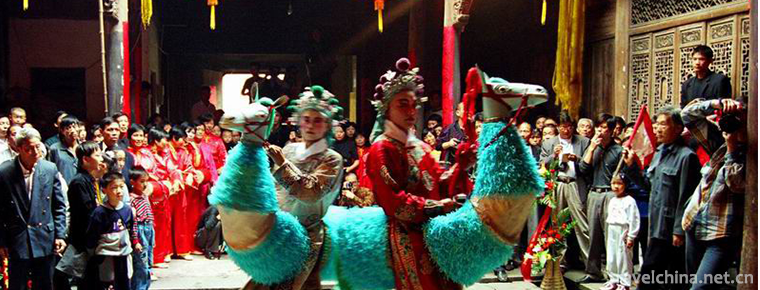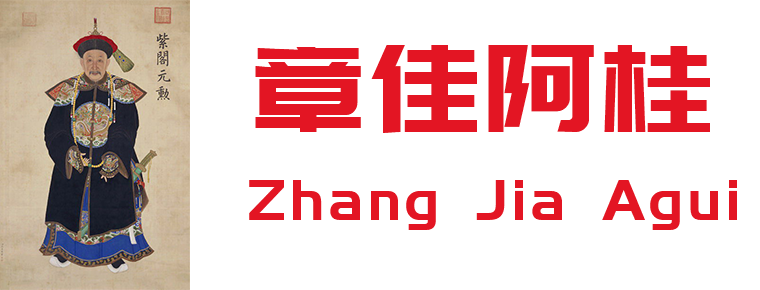Uygur Medicine
Uygur Medicine
Uygur Medicine magazine provides medical workers with good opportunities for education, continuing education and academic exchange platform, and is committed to improving the comprehensive quality of medical workers in an all-round way.
On May 23, 2011, Uygur medicine (traditional processing techniques of Uygur medicine, manufacturing techniques of Muniziqi Muslim Decoction, food therapy, Kuxitai Law) was approved by the State Council and listed in the third batch of national intangible cultural heritage list.
On November 11, 2014, Uygur Medicine (Sand Therapy) was approved by the State Council and listed in the fourth batch of national intangible cultural heritage list.
Basic information
Uygur magazine is a comprehensive national medical journal officially approved by the General Administration of Press and Publication, the director of the Health Department of the Autonomous Region, the magazine sponsored by the Uygur Medical Research Institute of the Autonomous Region and the Chinese Medical Association. International Standard Number of Uygur Medical Journal: ISSN1677-3219 Domestic Unified Number: CN65-1167/R.
Purpose of publishing
Uygur medical journals aim at scientificity, academics and practicability, and strive to timely and accurately reflect the new achievements, new methods, new theories and new trends of basic medical research, clinical medical research, preventive medical research and pharmaceutical research at home and abroad. This magazine now offers specialist reviews, biotechnology, health care, clinical research, medical forums, medical teaching, academic exchanges, hospital management, case reports, experience gathering, monographs, reviews and other columns, covering all aspects of the medical and health system. This journal has always adhered to the principle of high standard, high quality, high quality and standardization, and carried out the principle of combining theory with practice, foundation with clinic, popularization and improvement. It focuses on clinical practice and improvement. It bases itself on North China, faces the whole country and integrates with the international standards, reports timely the advanced medical scientific and technological achievements and developments at home and abroad, and constantly develops, innovates and keeps pace with the times. We will vigorously promote academic exchanges with other countries, and strive to improve the level of medical treatment, teaching, scientific research and hospital management.
fundamental theory
The basic medical theory of the ancient Uygur ancestors was formed before the 4th century B.C. It is believed that the basis of the whole nature and even the whole universe is composed of the contradiction and combination of the four elements of fire, air, water and soil, while human life is formed by the combination of the four elements of nature and can be maintained under its regular and direct influence. This materialistic view of nature was later accepted by the ancient Greek physician Hippocrates, and became the basis of their whole view of medicine. Hippocrates lived among the Cypriots on the north coast of the Black Sea in his youth. In Air, Water and Earth, which laid the foundation of his whole medical view, he wrote that he had benefited from the Cypriot medicine. In the Pelix era, Cypriot doctors and wizards were highly respected in Greece. After ancient Greek medical works were translated into Arabic, the four elements theory became the basic theory of Arabic medicine and Central Asian medicine in the later period. More than 400 B.C. Hazibayi of the Green State of the Tarim River Basin compiled 312 kinds of herbs, animal and mineral medicines, such as fennel, coriander, Senna leaves, hunger and salt, which attracted the visiting envoys of the ancient Greek medical scientist Felato. The Greek king promised to build an official palace for the people of Tarim in Tarim (today's Hetian). "Su Question Different Ways and Appropriateness Theory" records: "Westerners, the realm of gold and jade, the place of sand and stone, the place of heaven and earth are also cited. Its mausoleum is windy, its soil and water are strong, its people are not clothed and brown recommendation, its people eat and fat, so evil can not hurt its body, its disease occurs within, its treatment is appropriate poison, so poison, also from the West. It shows that the ancient Uygur ancestors knew the therapeutic effect of drugs long ago. Moreover, the use of poisons (strong drugs) is at a higher stage of drug use. Zhang Qian of the Western Han Dynasty sent out to the Western Regions and brought back many medicinal materials from the Western Regions, including walnuts, garlic, walnuts, pomegranates, safflower and grapes. Shennong Materia Medica, the earliest pharmacological monograph in the Central Plains, contains grapes, flax, sulfur yellow, deer, horn and other western medicinal materials. "History" records the "floating weed" of Kang Juguo, the "haemostatic medicine" of Yue-like country, and the "sulfur yellow, female yellow, Hu powder and salt green" of Guizi country. There are 256 medical prescriptions in Sui Shu Jingji Zhi, of which 5 to 6 are western domain name medical works, such as: 4 volumes of Essential Prescriptions of Western Domain Name Medical Collection, which unfortunately has long been lost. Several of them were translated by the famous monk of the Kuche Kingdom (Kuqa today), Mauroshi (344-413 A.D.). He began to preach in 383, translated Buddhist sutras, and translated Buddhist medical works, including his mother, Jaipa (King Qiuci's sister), the theory of the five zang organs of Jaipa, and so on. From Shennong Materia Medica to Xinxiu Materia Medica in Tang Dynasty, there are 850 kinds of medicines. Most of the 114 kinds of medicines added for the first time are authentic products from Western Regions, such as: Hutong Tear Driver (i.e. Qiuzi), Yanqi Green Salt, Xirong (a nickname for Western Regions), and Kunlun Ferui. Yutan Medical Literature, two well-preserved medical versions of Sanskrit prosody, are Sid-dhasaya and Jiyakapustaka by Ravigupta. Two copies of these documents have been published by Bailey in the Yutan Language Standards. The medical literature of Yutan was found on the sites of ancestral temples and monasteries in the early period of the kingdom. Most of these materials are now kept in Libraries in Germany and other countries. As far as we know, Yutian Medical Literature, like other Yutian materials, came from the 7th to 11th centuries. Some of the prescriptions and medicines described in the literature are those for raisins. Moreover, the swelling, sarcoidosis, scabies, pregnancy, abortion, skin whitening, eye-cleaning, butter, wine, pomegranate, rubiaceous herb, pepper, ginger, cardamom, sand sugar, which were recorded in the medical books of Shanshan, Yutan and Qiuzi ancient kingdoms before the 4th and 5th centuries A.D., are basically the same as those of Uygur medicine today.
In the 8th century, during the reign of Tang Tianbao, Biji Zamba Hirahan, a famous Uygur doctor in ancient Yutan, was recruited to serve as a royal doctor in Tibet. He translated more than 10 kinds of medical books, such as Medical Treasure, Typhoid Fever Interpretation, Corpse Diagram and Manlu Treasure, into Tibetan literature for the Tibetan King. Chide Zuzan (704-754 in power), the Tibetan king, made people collect books and named them "The Complete Book of Royal Health Care". After taking office in 754-797, Chisong Dezan, the fifth generation Tibetan king of the Tubo Dynasty, continued to employ famous doctors from all over the world to teach Tibetan medicine, compile medical works and develop Tibetan medicine. Sheila Khan co-authored with others more than 30 medical works, such as "Handimai Diagnosis Miaofa", "Xiaozhong Shenfang", "Bloodletting Tielian", "Puncture Qiaoshu" and "Nurturing Body Jingzhu". Before returning to Tatan, he dedicated books on human anatomy and measurement to the Tibetan King together with the great medical work Yellow Biji Sutra, which included various treatments and secrets of pulse cutting. These Uygur medical works played a great role in the production of the later famous Tibetan medical work Four Medical Codes. In the late ninth century, a group of Uighurs living in the northern desert of China, Huihe Khanate, suffered from famine and disease, was on the verge of economic collapse, and was broken by Jiaogas. Most of them moved westward and merged with the Uighurs who used to live in the vast areas of Xinjiang. The Uighur Medical Documents in the 9th century A.D. is a valuable material reflecting the medicine of the Uighur Dynasty at that time in Gaochang (now Turpan). Its contents include various clinical diseases, treatments and prescriptions. Therapies include diet therapy, pharmacotherapy, physiotherapy, cold and hot compress, moxibustion, blood letting, puncture, wound cleaning, fracture splint fixation, hydrotherapy, daily therapy and psychotherapy. Juice, Antelope Horn, Sticky Department... Beef, horse, wolf, human and rabbit bile, musk, beaver, chaff, white sandalwood, vinegar, black pepper, sesame, garlic and white lead powder, etc. In the Sui and Tang Dynasties, ancient Uygur medicine once flourished and spread to the coastal ports of Xi'an and Southeast China. Yangzhou was a commercial city at that time. Monks and businessmen from the Western Regions came to Yangzhou one after another. Jianzhen, a prominent monk in Yangzhou, went to Japan to preach. Because of several failures in crossing the sea, he suffered from blindness and was ineffective in many treatments. Later, he was invited to a Western Uighur doctor who had recovered from the operation and set sail for Japan to preach smoothly. Thus, at that time, Uygur doctors also had quite high surgical techniques. Farabi, a famous Uygur scientist, philosopher, astronomer and medical scientist (870-950 A.D.), has more than a dozen books on medicine, including On Nature, On Anthropology, On Neurology, Functions of Organs, On Heat, Cold, Wetness and Dryness of Nature, etc. He demonstrated the relationship between the physiological and pathological changes of nature and human body with the theory of four substances (four elements). This not only played an important role in promoting the development of Uighur medicine, but also had a great impact on his indirect student Ibn Sina's Great Medical Code, and even on Arab and Central Asian medicine.
Xinjiang was in the period of Karahan Dynasty in the 10th century, and Uygurs began to believe in Islam. For this reason, Atushi, Xinjiang, established the "Medeges Saqiye" (Luminous) School, which is a comprehensive scientific college including medical specialties. The school's most famous Uygur surgeon, Imaduddin Kashgar, is a respected doctor. He has gone to the battlefield many times and successfully completed various surgical operations. His superb medical skills and humanitarianism won the gift of King Bograhan and awarded the war horse and knife. He wrote such monographs as "Annotation of the Great Medical Code" and "Chinese Smilax". Although many Uighur medical works failed to survive because of the use of the Arabic alphabet of Chahatai in the middle of the Karahan Dynasty, a great deal of information about Uighur medicine can be verified by the Fule Wisdom, the Turkic Dictionary and the Uighur medical monographs after the Yuan Dynasty. The Turkic Dictionary of Mahmoud Kagli (1020-1080) records various clinical diseases, therapies and prescription medications in the same way as the Hui Uighur Medical Literature Selected. For example, "Mad Dog's Brain will be better for those bitten by rabies", "For nocturia, cook with camel meat and barley, and eat more", "If toothache, borax and musk are mixed. Hundreds of therapies and medicines such as "On the Teeth". Yu Sufu Has Hajifu (1009-1070), the author of The Wisdom of Happiness, not only eulogizes the political, economic and cultural prosperity and development of the Karahan Dynasty in the form of a long poem, but also expounds the four elements of human life, aging, disease, death and nature (fire, qi, water, soil) and human temperament, body fluid (bile, blood and mucus) with medical thought. The balance of fluid quality and black gallbladder quality is closely related. The general principles of treatment and the names of 20 dosage forms are introduced. In the early twelfth Century, when the Western Liao regime ruled Xinjiang to Mongolia, Aladin, a famous medical expert in the field of ZubdatulKawanilIlaj, was named "TibbiFitki (Forensic Medicine)" by "Moore" and "1150" in 1222. During the same period, Jamalidin Aksayi, a famous Uygur medical doctor, was born in Aksayi village, Hotan Moyu County. His medical monograph Aksayi, named after his village, was officially published in Lucknow City, India in 1899 and used as an official textbook of the Islamic Medical College in Delhi, India, until 1929. The book includes basic theory of Uygur medicine, diseases of various disciplines and their treatment, medicines and prescriptions, etc. It is a famous Uygur medicine book with high reputation at home and abroad.
The ruling class in Yuan Dynasty attached great importance to Hui medicine in order to make more Uighurs (Uighurs, Hui Hui, Uighurs and Khalalu) participate in politics and meet their demands. In most cities and Shangdu, Hui medicine institutes were set up. Uighur pharmacist Daluhuachi (president) was appointed by Daluhuachi (19 years old) in 1307. After the expansion of Hui Medicine Institute into Guanghui Department, only Nie, a Uighur surgeon, was born. Ear is the commander of the commander. According to the biography of Xirifu Ben Jiamaridin Agui, a famous Uygur doctor in Kuqa in the 17th century, Hu Duyumuhan Agui (1567-1658), a famous Uygur medical scientist in Kuqa, participated in the compilation of 36 volumes of Huihui Prescription in 1619. According to the famous military doctor Chi Hague living in Diaoyushan County of Hezhou (Hezhou, Sichuan), and the son doctor Ai Xue (1247-1318) of Brumishi, they were both famous Uygur doctors of the Yuan Dynasty. Surah (Mingjing) is a Uighur scientist, Jamal Karsi. (1322) A Dictionary of nature, geography and meteorology, mainly composed of Uygur medical vocabulary in Persian in Kashgar. Sadmi, a Uygur pharmacist living in the Central Plains at the same time, has a monograph "Ruizhutang Experience Prescription". Ku Sihui, a Uygur nutritionist, wrote "Dietary Essentials" which is a monograph on dietary hygiene and nutrition in ancient China (there are still controversies about the ethnic groups of Saddam and Ku Sihui, one book editor in chief). Dasturul Ilaj (Medical Guide), written by Mullah Arifu, a famous Uygur doctor in Hetian (1556-1662), reflected more Uygur medical knowledge in the works of Han Chinese medicine in the Ming and Qing Dynasties. Such as: Ming Dynasty's Compendium of Materia Materia Medica recorded in the Ming Dynasty's Compendium of Materia Materia Medica: Feru, runnenner, razor, Juhuanlian, flax, walnuts, walnuts, onion, pineapple, pineapple, fennennel, saffl, safflflower, water corvetvetvetvetvetvetvetvetvetvetvetvetvetvetvetvetvetvet, reververververberberberberberberberation incense, tail lamb, yellow sheep, altail, alpaca, camel, camel, cheese, cheese, grass, horn, anteantelop, antelop, antelop, antelop, antelop horn, antelop, antelop, antelop This is the case. There are also many famous Uygur medical works published, such as: Agiraz Tibbi by Mullard Baker, a famous Uygur doctor in the 17th century, Mupairi Kurubi by Mulana Seifei, a famous Uygur doctor in the 18th century, Manbaiyi Fowayi by Muhammad Reimu Sha Buwa and Ti by Said Muhtar Brack, a famous Uygur doctor in the 19th century. Bi Xifa, Tibi Chong by Hogar Reyimu Ahon, Sheratoy Siheti by Osman Baik, Tajizhbati Tibiye by Mullad Baik, Tezhkuli Yilagi by Mullah Yusuf, Ziaholi Kurufu by Buytimin and Xilub by Baideldin Supi Ahon, a famous Kashgar doctor Ruyi therapy), and so on.
Achievement Contribution
In modern times, there were many renowned Uygur physicians in Kashgar, Hetian and Turpan, who made outstanding contributions to the continuation and development of Uygur medicine. For example, the medical monograph Taijili Prescription, published in Kashgar in 1899, by Uygur physician Taijili (1848-1927). Many manuscripts are still lost in the hands of some Uygur doctors. Among the apprentices and students he taught, many of the medical schools he founded were founders of the development of Uygur medicine after the founding of the People's Republic of China. Such as: Yusufu Aji in Kashgar, Saiyihan in Yecheng, Masu Aji in Pishan, and Turdy Aji in Hotan. After more than 2500 years of long and hard accumulation, it has not only made great contributions to the development of eastern and Western medicine, but also absorbed their essence, and finally formed a relatively complete and unique theoretical system. That is to say, the four major theories of matter, temperament, body fluid, mechanics, health and disease explain the dialectical relationship between the human body and the outside world, and create a set of therapies for the diagnosis and treatment of diseases.
Four material theories include fire, gas, water and soil; temperament theory includes eight normal temperaments (heat, humidity, cold, dry, hot, warm, cold, dry) and eight abnormal temperaments; body fluid theory includes normal body fluid (4) and abnormal body fluid (4); mechanics theory includes vitality, spiritual force (12) and natural force (7); health theory includes 11 factors that health must have. Disease theory includes temperament disorders (8 kinds of body fluid and non-body fluid), shape-altered diseases, structural damage diseases and disease grade, disease stage, disease risk, etc. Diagnosis theory includes seven diagnoses (i.e., urine diagnosis, stool diagnosis and sputum diagnosis in addition to inspection, smelling, inquiry), and treatment theory includes nursing treatment, dietary therapy, pharmacotherapy, hand therapy and other four major therapies. Pharmaceutical doctrine includes herbal medicine, animal medicine, mineral medicine and their medicinal properties and flavors (dividing medicinal properties into dry, hot, wet, cold and dry, damp, cold, dry and cold, and dividing medicinal properties and flavors into grades 1, 2, 3 and 4), corrective drugs, substitutes, etc. Pharmaceutical doctrine includes dosage forms, which are divided into paste preparations (sugar paste, honey paste, bitter paste, antidote, crude paste, Ren paste, Emotional Shu paste, flower paste, containing. There are 12 kinds of ointment, ointment and ointment, 5 kinds of hard preparations (tablets, pellets, anal suppositories, ear and nose suppositories, vaginal suppositories), 6 kinds of loose preparations (oral powder, toothpowder, eye powder, blowing powder, oral powder, granules), 6 kinds of liquid preparations (syrup, dew, fruit juice, decoction, soaking liquid, mucus, nose, foot wash, oil, enema, drops, acid solution, injection, oral administration). There are more than 20 kinds of liquids and more than 60 kinds of liquids. Various preparations have attributes (dry, wet, cold, hot and dry, hot, wet, cold, dry), and attributes have a specific method of calculating the sex level, such as: 1, 2, 3, 4.
Medical diseases mostly take medicine internally, non-humoral temperament disorders use correction method, humoral temperament disorders first use pathogenic body fluid maturation method, the second use pathogenic body fluid excretion method, the third use the main medicine radical cure method. There are more than 20 kinds of therapies such as fumigation, sitting medicine, bleeding, cold and hot compress, sunbathing, hot spring bath, buried hot sand, etc. For liver and gallbladder diseases, digestive diseases, vitiligo, diabetes mellitus, vascular sclerosis heart disease and so on, it has a high curative effect. In surgery, while taking medicine, more than 20 kinds of therapies, such as cautery, heat convulsion, cloak skin, ligation, surgery, acupuncture, massage, manipulation reduction, are used. There are more than 800 commonly used medicines and 400 preparations. Uygur medicine is well received by the local people. It has made great contributions to national reproduction and health care.
Development status
In modern times, due to the import of Western medicine, Uygur medicine, like traditional Chinese medicine, is also facing the situation of exclusion, discrimination and even extinction. After the founding of the People's Republic of China, Uygur medicine has gained a new life. Especially since the reform and opening up in 1978, it has achieved unprecedented development. In Xinjiang Uygur Autonomous Region, 48 Uygur Medical Hospitals or Western Medical Hospitals have been established in prefectures, prefectures, cities and counties. Xinjiang Uygur Medical College and Xinjiang Uygur Medical Research Institute have also been established to carry out medical, teaching and research work. Reputable, talented and practical Uygur doctors were awarded corresponding titles to encourage them to bring their apprentices, sum up their experience, and write books. Xinjiang Uygur Medical Research Institute, together with four Uygur Medical Hospitals in autonomous region, Kashgar, Hetian and Turpan, has studied dosage form reform, vitiligo, diabetes mellitus and coronary heart disease with modern science and technology, and has achieved good results. Among them, the results of vitiligo treatment have won the "Outstanding Scientific Research Achievement Award" of Xinjiang Scientific Congress. These hard-working scientific and technological achievements can not be separated from the joint efforts of the predecessors of Uygur medicine, they have left valuable wealth for the development of Uygur medicine. For example: Kazunong (Little Medical Code), written by Yusuf Agui, founder of the late Kashgar Uygur Medical Hospital, Uygur Medical Treatment Manual compiled by Doctor Tudy Maimaiti of the late Hotan Uygur Medical Hospital, Uygur Medical Prescription Collection compiled by the late chief physician Tudy Agui, Orthopedic Therapy written by the late chief physician of Atushwei Shamshak, and the late Uru. Dr. Bayi Ahong, one of the main founders of Muqiwei Medical Hospital (now Autonomous Region Uygur Medical Hospital), wrote "Uygur Medical Knowledge" and so on.


-
Noodles with quickfried eel shreds and shelled shrimps
Shrimp fried eel noodles is a famous traditional food in Kui yuan hall, Hangzhou City, Zhejiang province. When the shrimp is cooked with fried eel noodles, select the strong fresh eel,.
Views: 158 Time 2018-10-27 -
Floral water bay hot spring resort
Huashuiwan Hot Spring Resort is located at the foot of Xiling Snow Mountain in Dayi County, Chengdu, Sichuan Province, surrounded by mountains on all sides. National AAAA scenic spot..
Views: 215 Time 2019-01-17 -
Ziweidong Scenic Area
Seeing the pronoun of the first reaction of "purple cave" to "immortal" cultivation and residence, we often enchase that fairyland dream on this name..
Views: 131 Time 2019-03-22 -
Cai Luns Paper making Legend
Cailun Paper-making Stories and Legends are legends circulated in Cailun's fiefdoms, burial sites and experimental sites of Yangxian Longting and surrounding areas..
Views: 206 Time 2019-04-04 -
Lodgeroye and Zaszai
Lodgeroye and Zaszai is a representative long poem of Hani poetry style, which is widely spread in all villages inhabited by Hani Biyo people in Hani Autonomous County of Mojiang. There are ten chapte.
Views: 168 Time 2019-05-15 -
Sintering Techniques of Xingyao Ceramics
Xingyao firing technology is a local traditional handicraft in Hebei Province. Xing kiln is a famous northern kiln in China. As early as the Northern Dynasty, Xing kiln began firing celadon and a smal.
Views: 225 Time 2019-07-08 -
Bamboo horse
Bamboo horse, also known as running bamboo horse or playing bamboo horse, is an ancient traditional folk dance. The art form of singles performed on the street is like the "two ghosts wrestling&q.
Views: 195 Time 2019-08-10 -
Bamboo Paper Making Skills
Bamboo paper production maintains a complete traditional process. It is manually made by dipping paper. There are 15 links and 72 processes from material selection to paper making. The production proc.
Views: 202 Time 2019-08-10 -
Zhang Jia Agui
Ah Kui (September 7, 1717 - October 10, 1797). Zhang Jiashi , word Guang Ting , Number Cloud cliffs Manchuria's blue flag people (after the war in Xinjiang were promoted to Zheng Bai Qi), a Bachelor o.
Views: 192 Time 2019-09-11 -
Neijiang in the period of the Republic of China
The 1911 Revolution ended the rule of Qing Dynasty in Neijiang City. In the 24th year of the Republic of China (1935), Sichuan government was unified, and the districts, cities and counties of Neijiang City were divided into the second (Zizhong, Neijiang, Ziyang, Jianyang,.
Views: 336 Time 2020-12-16 -
Guangan location
Guang'an City is located in the east of Sichuan Province, with the geographical coordinates of 30 ° 01 ′ - 30 ° 52 ′ n, 105 ° 56 ′ - 107 ° 19 ′ e, 134.5 km from east to west, 93.6 km from north to south, from Linshui county to Dazhu County of Dazhou City, from.
Views: 359 Time 2020-12-19

